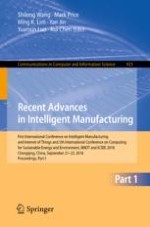2018 | Buch
Recent Advances in Intelligent Manufacturing
First International Conference on Intelligent Manufacturing and Internet of Things and 5th International Conference on Computing for Sustainable Energy and Environment, IMIOT and ICSEE 2018, Chongqing, China, September 21-23, 2018, Proceedings, Part I
herausgegeben von: Shilong Wang, Mark Price, Ming K. Lim, Dr. Yan Jin, Yuanxin Luo, Rui Chen
Verlag: Springer Singapore
Buchreihe : Communications in Computer and Information Science
